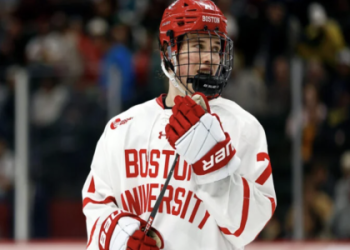So, I got this idea in my head a while back about Ben Barr’s hockey teams, you know, how they play, what makes them tick. I figured, hey, maybe I can pick up a few things, maybe for that youth team I help out with on weekends, or just, you know, to sound smart when talking hockey with friends. Seemed like a decent enough project.
My Grand Plan: Decoding the System
I thought I’d be all methodical about it. My big plan was to watch a bunch of UMaine games. I mean, hours of footage. I was gonna take notes, draw up little diagrams of their breakouts, their forecheck, maybe even try to understand their defensive zone coverage. I had this vision of myself, like some kind of amateur scout, uncovering all these brilliant tactical nuggets. Easy peasy, right? Just watch, learn, apply. That’s what I told myself.
Well, let me tell you, that “easy peasy” part went out the window pretty fast. First off, finding good, clear footage with decent camera angles for everything you want to see? Not always as simple as watching a pro game with twenty cameras. Sometimes you’re squinting at a blurry feed trying to figure out who went where. And the commentators, bless their hearts, aren’t always breaking down the subtle neutral zone trap adjustments, you know?
The Reality Check
So there I was, notebook full of scribbles that looked more like abstract art than hockey plays. I’d spend an evening convinced I’d figured out a key setup, then watch another game and see them do something completely different. It was like trying to catch smoke. It turns out, these coaches, they’re not just running a playbook they downloaded off the internet. Shocker, I know.
And then came the “application” part. I had a few ideas I thought were pure gold for the 12-year-olds I was “assisting” with. “Okay kids, today we’re gonna implement a modified 1-2-2 forecheck!” Their faces were, uh, less than enthusiastic. Mostly confused. It dawned on me pretty quick that what a group of disciplined, highly skilled college athletes can do is, shall we say, a tad different from what a bunch of kids who are still working on not tripping over the blue line can manage. My grand tactical revolution stalled before it even got out of the locker room, metaphorically speaking.
- Figured I’d watch some games.
- Thought I’d just “get” the system.
- Turns out, it’s a lot more than X’s and O’s.
- Kids just wanted to play, not listen to my half-baked theories.
What I Actually Learned (The Hard Way, Of Course)
This whole Ben Barr deep-dive actually taught me something, but it wasn’t really about specific hockey systems. It reminded me of this one time, years ago, I tried to build a custom PC from scratch. I watched a ton of YouTube videos, read all the forums. Thought I was a tech wizard. Long story short, I ended up with a very expensive pile of components that wouldn’t boot, and a bruised ego. Had to call my buddy Dave, the actual tech wizard, to come bail me out. He just laughed, mostly.
That’s kinda what this felt like. I was trying to grab this high-level concept and just, you know, use it, without really appreciating the mountain of work, the philosophy, the years of development and player buy-in that goes into making a team successful. Coaches like Barr, they don’t just show up with a whiteboard and say “do this.” They build things, cultures, habits. It’s a whole process.
Why do I know this now? Because I spent a good few weekends, fueled by way too much coffee, trying to be a tactical genius from my couch. My wife even asked me if I was okay at one point, because I was just staring intently at my laptop screen, muttering about defensive layers. The kids on the team? They were probably wondering why the “fun assistant coach” suddenly started talking like a stressed-out pro. They still mostly just chase the puck in a glorious swarm, by the way. And honestly, that’s probably for the best.
So, what did I get out of my Ben Barr hockey project? Well, I didn’t exactly become a coaching guru overnight. But I got a heck of a lot more respect for the guys who do this for real. And I learned that sometimes, just sometimes, it’s better to keep it simple, especially when your players’ main concern is whether there’ll be orange slices after the game. That, and Dave still brings up the PC story whenever he wants a laugh. Some lessons you just don’t forget.














